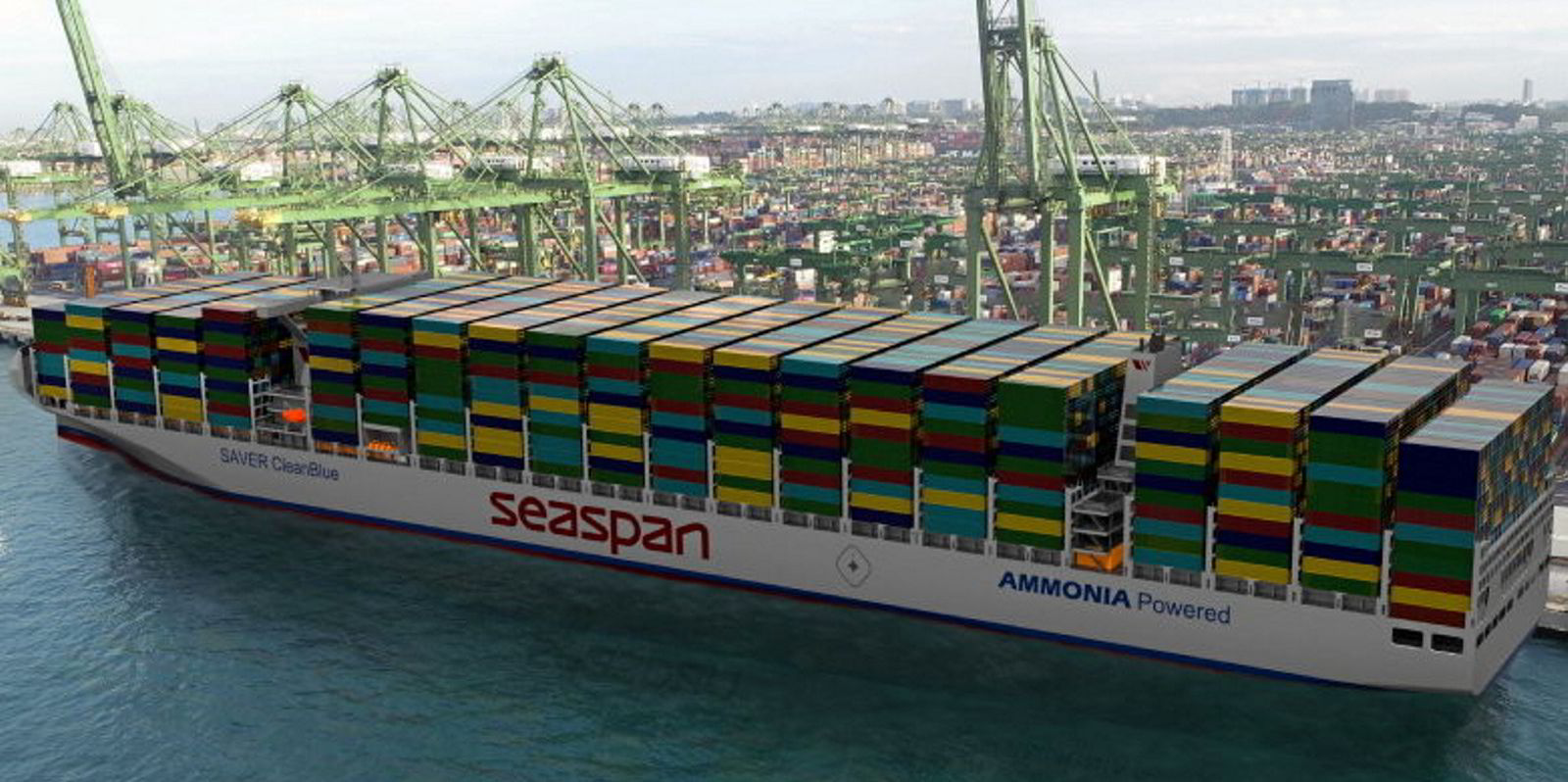The first big container ship running on ammonia should be on the water by 2030 at the latest, according to the authors of a design report.
Canadian tonnage provider Seaspan is working on an ammonia-fuelled 15,000-teu neo-panamax design with Foreship and the Maersk Mc-Kinney Moller Center for Zero Carbon Shipping.
One of the lead authors of the report, Sebastian Brindley, an independent senior naval architect acting on behalf of Seaspan, said many things still have to be put in place before a ship can be ordered and built.
He told TradeWinds: “We need to get the design sorted. We need to get the engine specs sorted. We need to also make sure we’ve got the availability of ammonia. Bunkering — we need to make sure the shoreside facilities, the ports are ready for it, the safety side of it is ready.
“From Seaspan’s side, we are really keen to make sure that we’ve done our bit.
“I think we’re probably looking at 2030. I mean realistically, looking at engines, that kind of time probably is when ammonia is going to start to pick up. But I do not have a crystal ball, and I would love to have a crystal ball, but that’s my gut feeling.”
He hopes the project can be a spur to others to make the same journey.
“We’re here, we’re ready. We know what we need and we then need to use this as an indication to the rest of the sector to say, ‘Come on, guys, we know we need to make sure that we’ve got ammonia available, that we can actually realise this project and move it forward’,” he added.
Seaspan, as a tonnage provider, needs its charterers to join in too.
“We do rely on our clients to be able to also move into the sector as well in order for us to take this forward,” Brindley said.
“So we need support from the charterers, we need support from energy suppliers and ports and regulatory bodies. So there’s a lot of different parts that are going to be needed for this to become something that’s achievable.”
Quicker than 2030?
Thomas McKenney, head of ship design at the Maersk Mc-Kinney Center, is a little more optimistic about the time frame.
“From my personal perspective, I would be a little more ambitious and say, you know, 2027, 28 timeline. We believe it can, and we want it to be able to, have an impact prior to 2030,” he told TradeWinds.
“I think if we look at it from the engine development side, the first engine out next year is not the right size to be the main engine for this vessel. That means that the engine maker will have to scale that design to larger.
“If the demand is there, then the engine makers will do it.
“We do see it having an impact for the 2030 time frame in terms of achievement of emission reduction targets and alignment with International Maritime Organization greenhouse gas strategy.”
It is too early to estimate the extra costs of such ships, however, the partners said.
They argue that ammonia-fuelled vessels will have a similar capital expenditure premium to LNG-fuel vessels relative to bunkers. The question marks surround any additional systems needed.
Brindley said: “From our side, I think it’s really important that we do our first step. This is something that could be a very realistic solution moving forward for the container sector in order for us to decarbonise the sector. So that’s our common position.”





